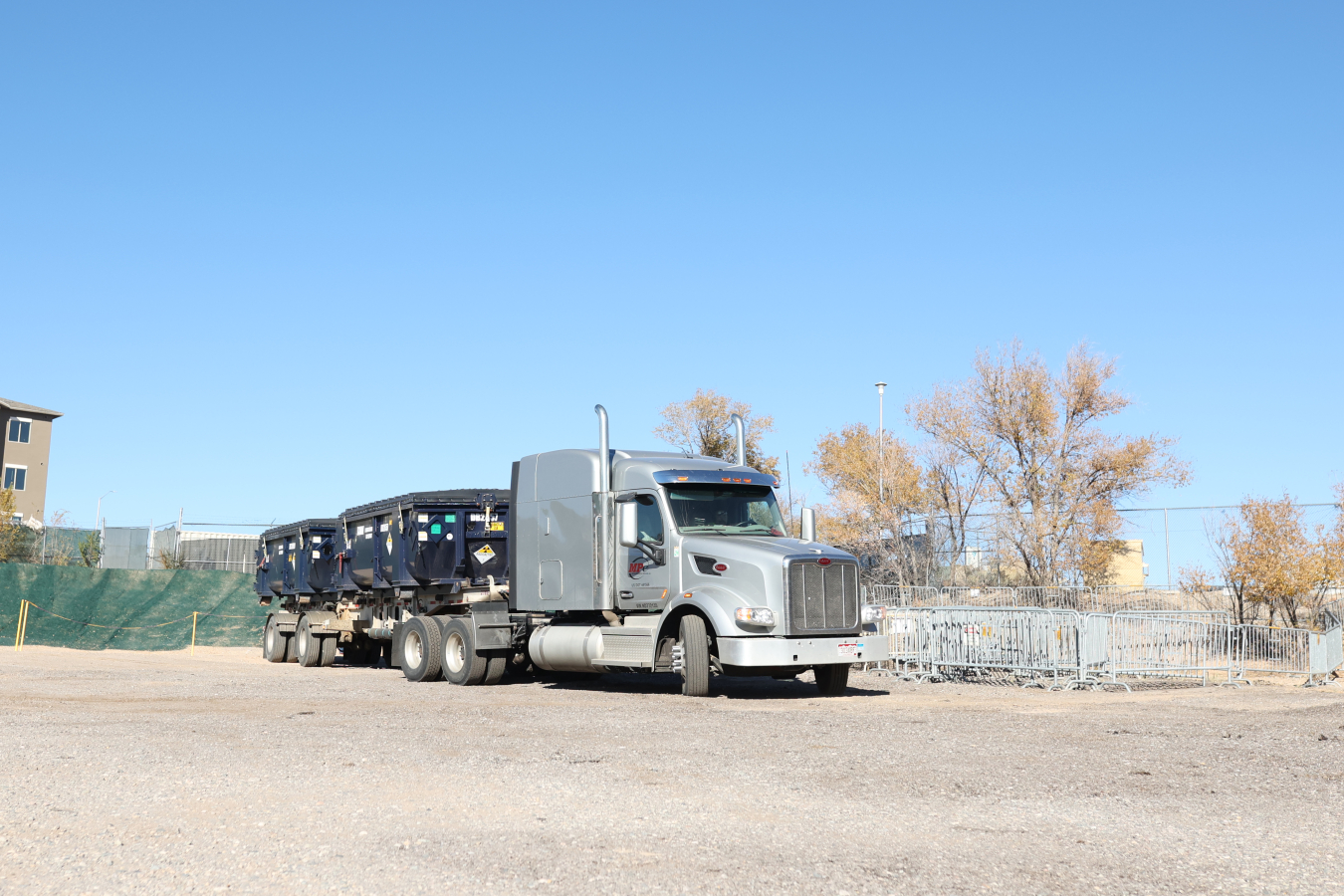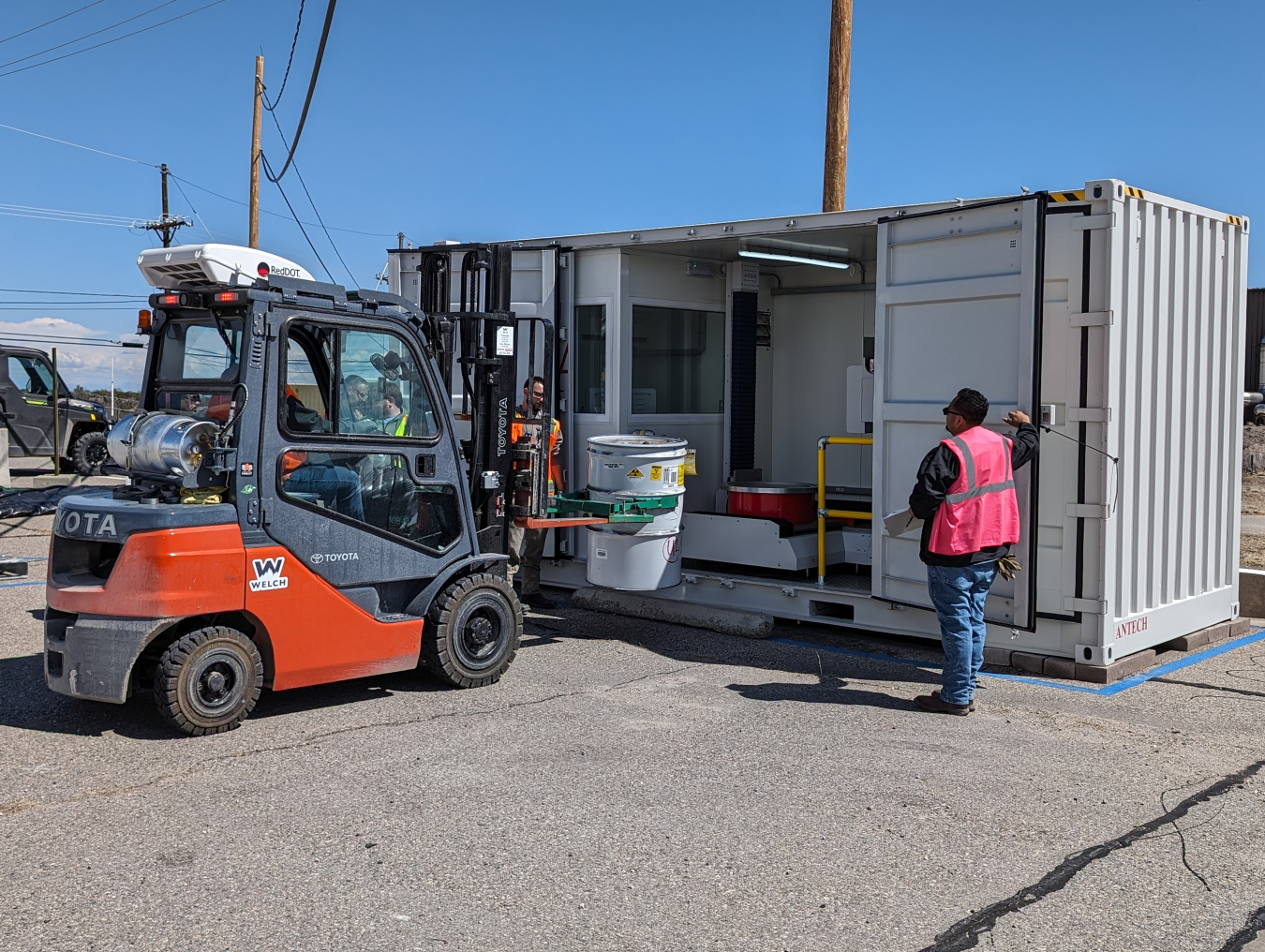Jessica Kunkle, Manager, EM Los Alamos Field Office
“EM-LA fulfilled our regulatory commitments for fiscal year 2024, demonstrating to the state and the residents of northern New Mexico our dedication to safely, effectively, efficiently and transparently progressing the LANL legacy cleanup mission. Significant progress was made this year with mission-critical work, including disposition of legacy waste and soil investigation and remediation. In addition, we executed a mutually agreed revised 2016 Consent Order with the New Mexico Environment Department. I look forward to continuing to engage in the legacy cleanup with pueblos, stakeholders and the public, and enhance EM-LA’s community engagement efforts.”
HIGHLIGHTS
- Retrieved, size-reduced and repackaged 158 buried corrugated metal pipes containing cemented transuranic waste at Technical Area 54, Area G—an EM 2024 priority.
- Completed a demonstration of the Universal Drum Assay and Segregation System to more accurately analyze the contents of legacy radioactive waste drums.
- Installed monitoring well R-76 to acquire additional data for the hexavalent chromium plume.
- Investigated and remediated contaminated soils at Twomile Canyon Aggregate Area.
- Received regulatory approval from the New Mexico Environment Department (NMED) on completion of Middle DP Road Site cleanup.
- Met all 15 fiscal year 2024 Milestones agreed to with NMED under the 2016 Compliance Order on Consent.
- Continued to prioritize legacy transuranic waste shipments to WIPP.
ADDRESSING LEGACY WASTE AT LOS ALAMOS NATIONAL LABORATORY
Completed retrieval, size-reduction and packaging of all 158 buried corrugated metal pipes at Technical Area 54 (TA-54), Area G for shipment to the Waste Isolation Pilot Plant (WIPP) for final disposition.
In fiscal year 2024, EM-LA shipped approximately 50.3 cubic meters of legacy transuranic (TRU) waste to WIPP for disposal, continuing to ensure no shipping backlog, and sent 391 of the remaining 451 containers of above-ground low-level and mixed low-level radioactive waste to off-site licensed disposal facilities.
DEMONSTRATING INNOVATIVE CLEANUP TECHNOLOGY
Successfully completed a pilot demonstration of the Universal Drum Assay and Segregation System (UDASS), an advanced gamma assay drum counting system, testing a set of 373 legacy waste drums at TA-54, Area G. Pending final analysis and review, UDASS could be used across the EM complex to more accurately analyze TRU and low-level waste, leading to
better utilization of space at WIPP.
PROGRESSING EFFORTS FOR GROUNDWATER PLUME
Installed monitoring Well R-76 to further characterize the hexavalent chromium groundwater plume beneath Sandia and Mortandad canyons, completing a 2024 regulatory milestone.
EM-LA and NMED convened an expert technical review team with members from the Network of National Laboratories for Environmental Management and Stewardship, industry, academia and U.S. Environmental Protection Agency Region 6 to assess current chromium interim measures, plume characterization and groundwater modeling.
Resumed partial operation of the chromium interim measures groundwater treatment system in late September 2024.
COMPLETING CLEANUP AT KEY LOS ALAMOS SITE
In February, NMED approved the assessment report concluding the investigation and remediation of soil and debris at the Middle DP Road Site was complete. During the project, more than 5,917 cubic yards of waste and debris was excavated, packaged and shipped to licensed, off-site disposal facilities. The land is an important part of Los Alamos County’s economic development efforts.



